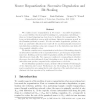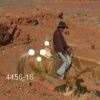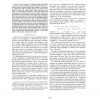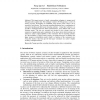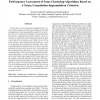271 search results - page 48 / 55 » High-Resolution Functional Quantization |
DCC
2002
IEEE
14 years 7 months ago
2002
IEEE
We consider source requantization in two forms -- successive degradation (i.e., source fidelity reduction) and bit stealing (i.e., information embedding) -when no forward planning...
CVPR
2010
IEEE
2010
IEEE
Learning a Hierarchy of Discriminative Space-Time Neighborhood Features for Human Action Recognition
14 years 3 months ago
Recent work shows how to use local spatio-temporal features to learn models of realistic human actions from video. However, existing methods typically rely on a predefined spatial...
IJCNN
2008
IEEE
14 years 1 months ago
2008
IEEE
— Fuzzy Associative Conjuncted Maps (FASCOM) is a fuzzy neural network that represents information by conjuncting fuzzy sets and associates them through a combination of unsuperv...
MMM
2007
Springer
14 years 1 months ago
2007
Springer
This paper presents a fragile watermarking technique to tamper proof (Mocap) motion capture data. The technique visualizes 3D Mocap data as a series of cluster of points. Watermark...
CIT
2007
Springer
14 years 1 months ago
2007
Springer
In this paper a fuzzy quantization dequantization criterion is used to propose an evaluation technique to determine the appropriate clustering algorithm suitable for a particular ...
